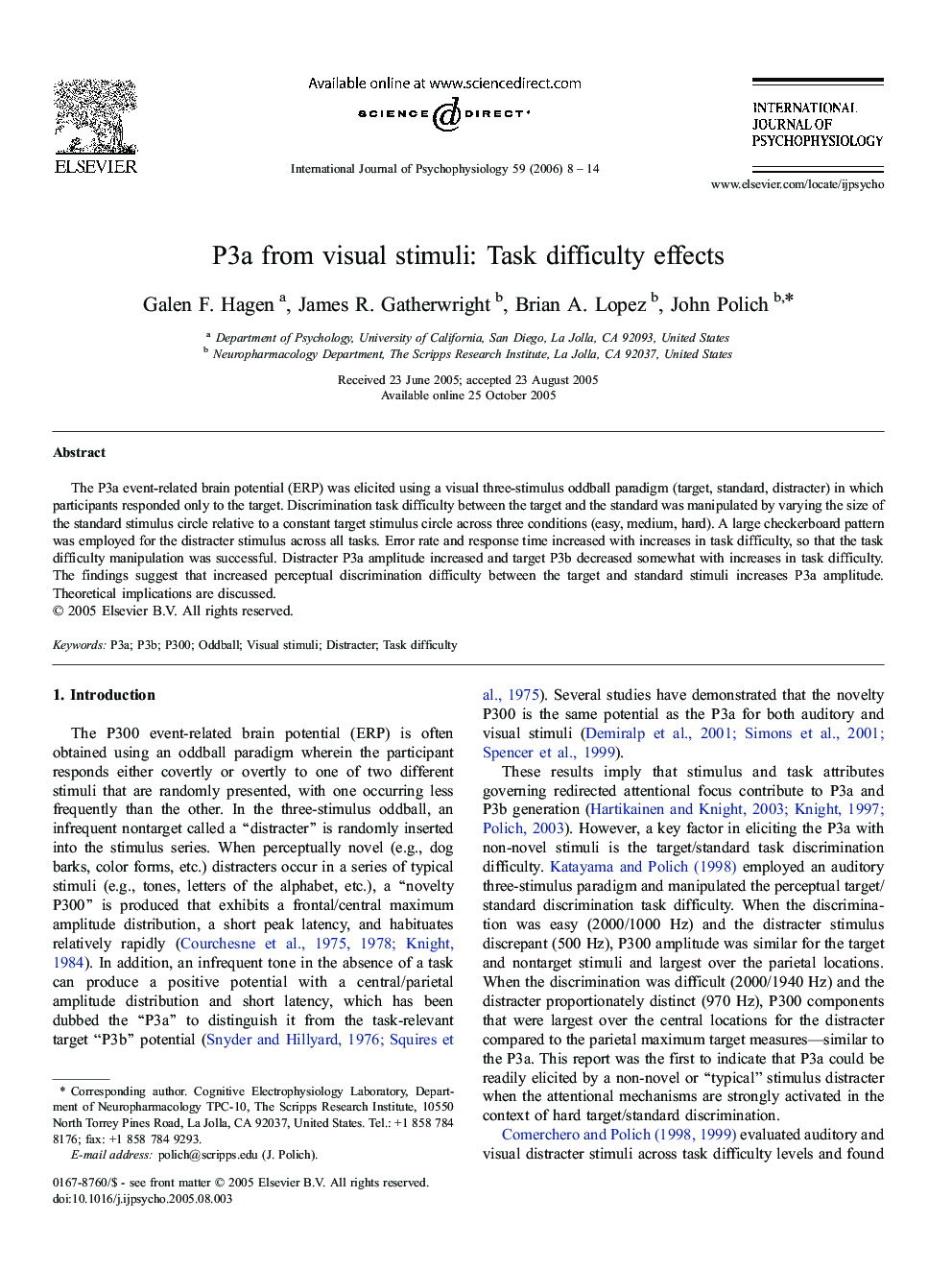| Article ID | Journal | Published Year | Pages | File Type |
|---|---|---|---|---|
| 931049 | International Journal of Psychophysiology | 2006 | 7 Pages |
The P3a event-related brain potential (ERP) was elicited using a visual three-stimulus oddball paradigm (target, standard, distracter) in which participants responded only to the target. Discrimination task difficulty between the target and the standard was manipulated by varying the size of the standard stimulus circle relative to a constant target stimulus circle across three conditions (easy, medium, hard). A large checkerboard pattern was employed for the distracter stimulus across all tasks. Error rate and response time increased with increases in task difficulty, so that the task difficulty manipulation was successful. Distracter P3a amplitude increased and target P3b decreased somewhat with increases in task difficulty. The findings suggest that increased perceptual discrimination difficulty between the target and standard stimuli increases P3a amplitude. Theoretical implications are discussed.
